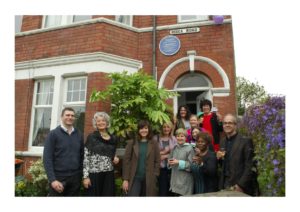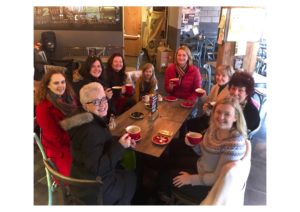
Statues are big news at the moment in the UK – both the ones you can see and the ones that you can’t – by which I mean the missing statues in our villages, towns and cities. Since the Black Lives Matter protests led to the dismantling of the Colston bronze in Bristol in June, and the guerrilla installation in July of a statue of Jen Reed[1], a black woman protester in its place, both the significance and the placement of public monuments are being reassessed as cultural and historical beacons for both current and future generations.
Necessary and difficult conversations are being held about who should be represented and remembered in public art. In Wales the First Minister has announced[2] a national audit of statues and street and building names to address connections with the slave trade. However, it is not just existing statues that are being re-evaluated; by questioning the diversity of public monuments we are finally starting to ask about the cultural gaps and, to identify the missing people we should celebrate as we travel around our communities.
There are currently no public statues of named women in Wales.
Whilst monuments to men feature across the nation, in my home city of Newport there are more statues of farmyard animals than named women. What message does this send to our children, our citizens and our visitors? For me, the current situation is clear: the social, economic and political contributions of Welsh women are unappreciated, unacknowledged and potentially lost, and it is just not good enough. Women have played important roles and made invaluable contributions to society over the centuries, but our pubic monuments do not reflect this. We do not exist in the cultural landscape.
The Monumental Welsh Women organisation was founded a few years ago to begin to address this chasm; our mission is to erect five statues, honouring five Welsh women, in five different locations within the next five years. The statues will be funded by a mixture of public, private and crowdfunded donations, including a generous donation by the Welsh Government to kick off the campaign.
The first statue, selected by a public vote as part of the BBC’s 2019 Hidden Heroine[3] programme, will be of Betty Campbell, Wales’ first black head teacher and Cardiff community activist. She will be immortalised in the heart of the capital by sculptor Eve Shepherd. In Newport, Wales’ third largest city, the statue will be for our most prominent daughter, Lady Rhondda.
I don’t need to introduce Lady Rhondda, Margaret Haig Mackworth, to visitors of this website. She was the founder and editor of Time and Tide, and the creation of this unique publication was driven by her ambition, fortune and vision. As her biographer Professor Angela V. John says, Time and Tide reflected the views of the thinking woman and man, especially the newly enfranchised woman over thirty[4]. It was where Lady Rhondda published her seminal ‘At the Half-Way House’ article, continuing her lifetime’s work of campaigning for women’s equality, after the Representation of the People Act gave votes to all men over 21 but only to woman over the age of 30. Lady Rhondda gave voice through Time and Tide to her call for equal franchise of the sexes, explaining the aims of what became the Six Point Group.
I am delighted to chair the Statue for Lady Rhondda Steering Group, a sub-group of the Monumental Welsh Women, formed by local women last year, many of whom were involved in a smaller-scale crowdfunder in 2015 that successfully campaigned for a blue plaque, next to the post-box Lady Rhondda set alight as part of her pre- Time and Tide Suffragette activity.

We aim to raise £100,000 to put Lady Rhondda on the pedestal she deserves, in the city where she was raised, and where her ashes were laid to rest. Working in partnership with the Monumental Welsh Women organisation, Statue for Lady Rhondda aims to right the public wrong of these missing Welsh women in public art. We want to see Lady Rhondda in a prominent position in Newport, to commemorate her legacy, to better celebrate the diversity of our national history and inspire the next generation of female (and male) leaders. Seeing is believing.
Join in- we can do it!
By Julie Nicholas, Chair of the Statue for Lady Rhondda steering group, Newport, Gwent.
Contributions to the Statue for Lady Rhondda fund can be made here.
[1] https://www.bbc.co.uk/news/uk-england-bristol-53427014
[2] https://gov.wales/black-lives-matter-first-minister-of-wales-announces-statues-street-and-building-names-audit
[3] https://www.bbc.co.uk/programmes/profiles/4Tz2cH6JnlT0Rc1kwRyWkx6/hidden-heroines
[4] Angela V John, ‘Rocking the Boat, Welsh Women who championed equality 1840-1990’, Parthian: 2018, p.249.